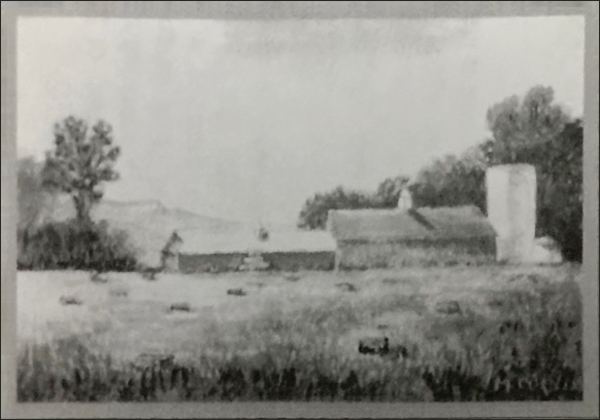A tale of two families: the Beeman-Duncan Ranch


An artist’s rendering of the Beeman-Duncan Ranch circa 1925.
One sees something of a mess on the southwest corner of State Highways 105 and 67 in Sedalia. Bad news. Abandoned property, right? Where are the bulldozers? Only old-timers know that the parcel embodies epic stories of two families, their fabric deeply woven into Sedalia’s rich history.
Born in Canandaigua, New York, in 1833, restless soul James Beeman found his way west after the Civil War. Previously a farmer in Michigan and Kansas, he married flatlander Keziah Jane Bradley. Several times he joined Buffalo Bill Cody to hunt buffalo that provided meat for transcontinental railroad workers. In that process, his heart was taken by the beauty that was Colorado.
In 1876, he and Keziah packed up all they could and bought the Jonathan House Farm in Plum, Colorado (soon to be renamed Sedalia). In their covered wagon were cuttings from Missouri walnut stock. Today, 146 years later, they are the trees that tower over the ranch driveway and that were thought to be quite personal to him then. When electrification lines were being routed, Beeman made it crystal clear with his shotgun that the lines needed to go on the other side of Highway 105.
The West was still a bit on the wild side in the late 1800s. Occupying a major crossroad and near the juncture of East and West Plum Creeks, there was a lot of action at Beeman’s corner. Located on the road to Denver from Colorado Springs, the Beemans allowed folks to camp and stable their horses overnight on family property. One four-legged overnighter kicked James in the head in 1878. The only person around to help was Victor Marquis, village smithy and de facto town doctor who managed to save his life. Barely surviving, James lost an eye. A direct consequence of that accident was that his son, Louis, a mere 8 years old, was forced to mature quickly, taking on any chore he could.
The ranch location was especially convenient for commerce. Realizing this, James and Clarence Frink of Larkspur struck a deal allowing the Larkspur dairy baron to build a creamery on a strip of Beeman land. It was a boon to the locals, serving as a perfect drop point for dairy herd production from farms along Jarre and Plum creeks. Everything was done on credit. Farmers were not compensated for their milk until retail customers had settled their accounts with Frink.
Close to Sedalia, the ranch pond had many uses. Before refrigeration, ice was king on the prairie and the Beeman pond provided freezy stuff to townspeople and local merchants. Yet there was plenty of ice left for other townsfolk to skate on in the winter. It was also a delightful place for Sedalia kids to avoid mischief and play winter games.
James predeceased his wife in 1911. By that time, Louis had long since taken over ranch operations from his father and married Harriet Davis in 1905. She fit in nicely, cooking for the family and hired hands. (Later, she would become Sedalia’s fire chief). Though they had two sons who worked the ranch, the Beemans sold out to Doctor William Duncan in 1918.
To be continued next month …
By Joe Gschwendtner; photo courtesy of Sedalia Historic Museum and Gardens